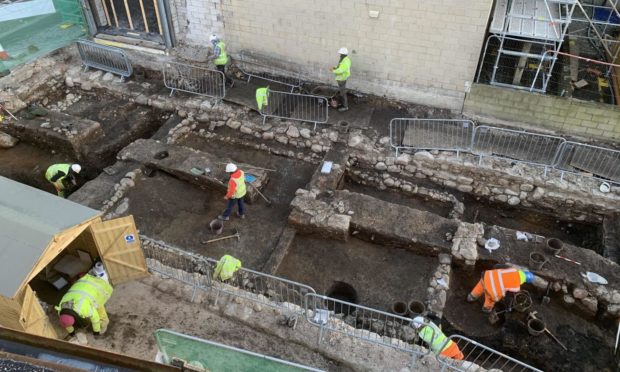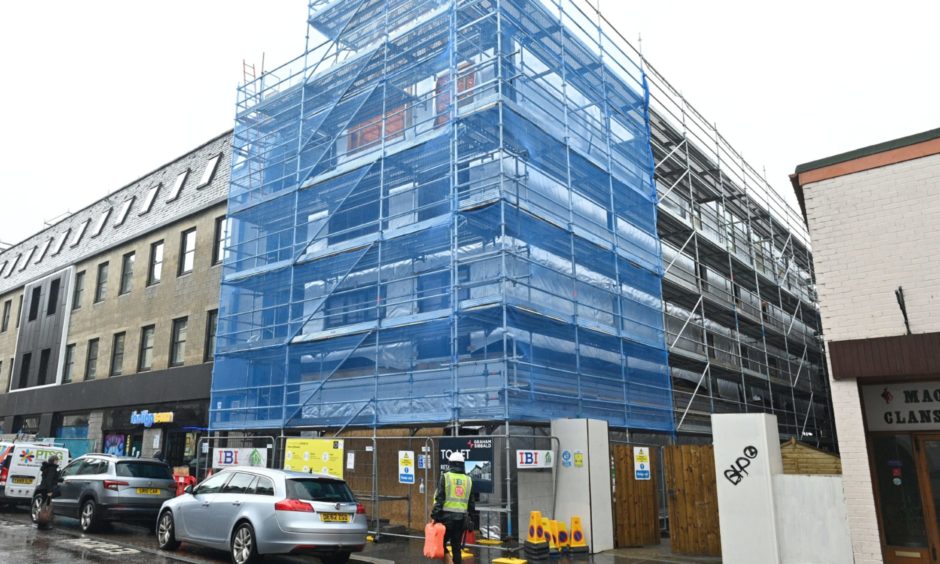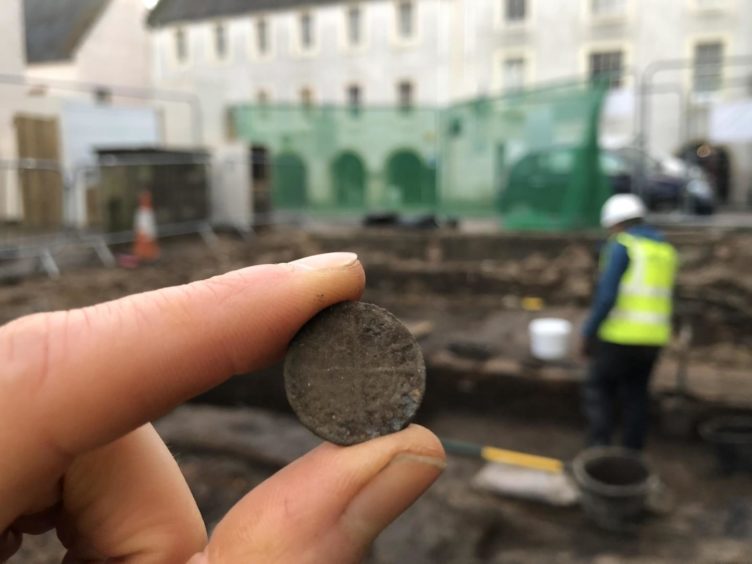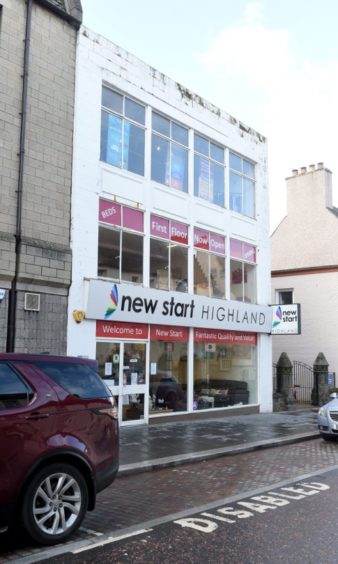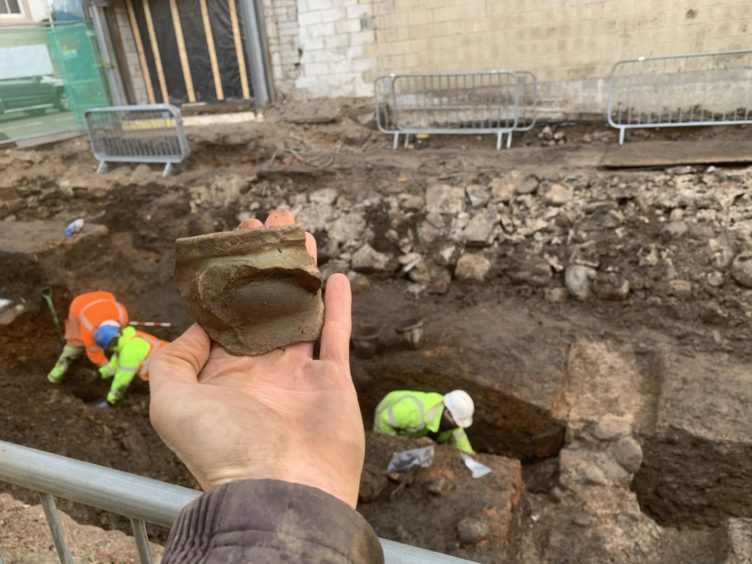Archaeologists have uncovered the remnants of medieval ruins in the heart of Inverness, providing a rare glimpse into the history of the city’s iron smithing industry.
Investigations have been carried out by AOC Archaeology at the site of the city’s original New Start Highland charity shop, uncovering ancient ruins beneath the 19th Century structures.
Ark Estates tore down the former premises occupying 99 Church Street to make way for a modern four-storey housing and retail complex.
The development is due for completion in November.
Leading archaeologists have now uncovered the ruins of two burnt-down medieval structures on the grounds, as well as a wide range of antiquities including medieval coins and iron tools.
AOC archaeologist Lindsey Stirling, who supervised excavations said: “This was an amazing and rare chance to experience first hand these moments in time preserved after activities had ceased and buildings had been abandoned, and to see the overlapping of successive occupation.”
The site lies in the heart of the medieval town of Inverness on a road, formally referred to as “Kirkgate”, which ran along the natural route from the castle brae to the early church site.
Houses and associated local industry would have been built along this street from the late 12th Century.
During an excavation of the site, archaeologists have uncovered preserved layers of medieval archaeology on the site that contained evidence for multiple periods of activity and construction.
Their discoveries included two well-preserved, burnt-down wattle and daub medieval structures with stone footings, later stone-built structures and realignments of buildings with internal walls, wooden floor joists and cobbled surfaces.
Wattle and daub was an ancient building method used in medieval times to construct walls using natural elements.
Constructors would weave vertical wooden stakes, or wattles, with horizontal twigs and branches then daub them with clay and mud.
A wide range of artefacts was also recovered from the site, including beautiful carved bone pins, medieval coins, iron tools and fittings, bronze ornamental objects and broken ceramic vessels spanning centuries of activity.
The dig was made possible by developer-led funding by Ark Estates on behalf of the Highland Council.
Read more:
-
Highland charity shop to be demolished to make way for affordable homes
-
Inverness charity shop demolished to make way for affordable housing
-
Work under way on centrepiece retail and residential development in Inverness city centre
Inverness-based contractors IBI Joiners are currently in the midst of building a four-storey complex on the site housing 10 affordable one-bedroom properties and a purpose-built ground floor residential unit.
Construction on the city centre build commenced at the start of this year, following numerous delays imposed by the pandemic.
The build is one of two major developments being constructed by the contracting firm, with works currently under way on the former Arnott department store on nearby Union Street.
Managing director Brian Innes previously spoke of the challenges posed by the scale of the site earmarked for the development alongside demand for resources as stocks run low due to Covid.
The development is now beginning to take shape, with contractors scheduled to hand the keys over in November.
The development is now beginning to take shape, with contractors scheduled to hand the keys over in November.
